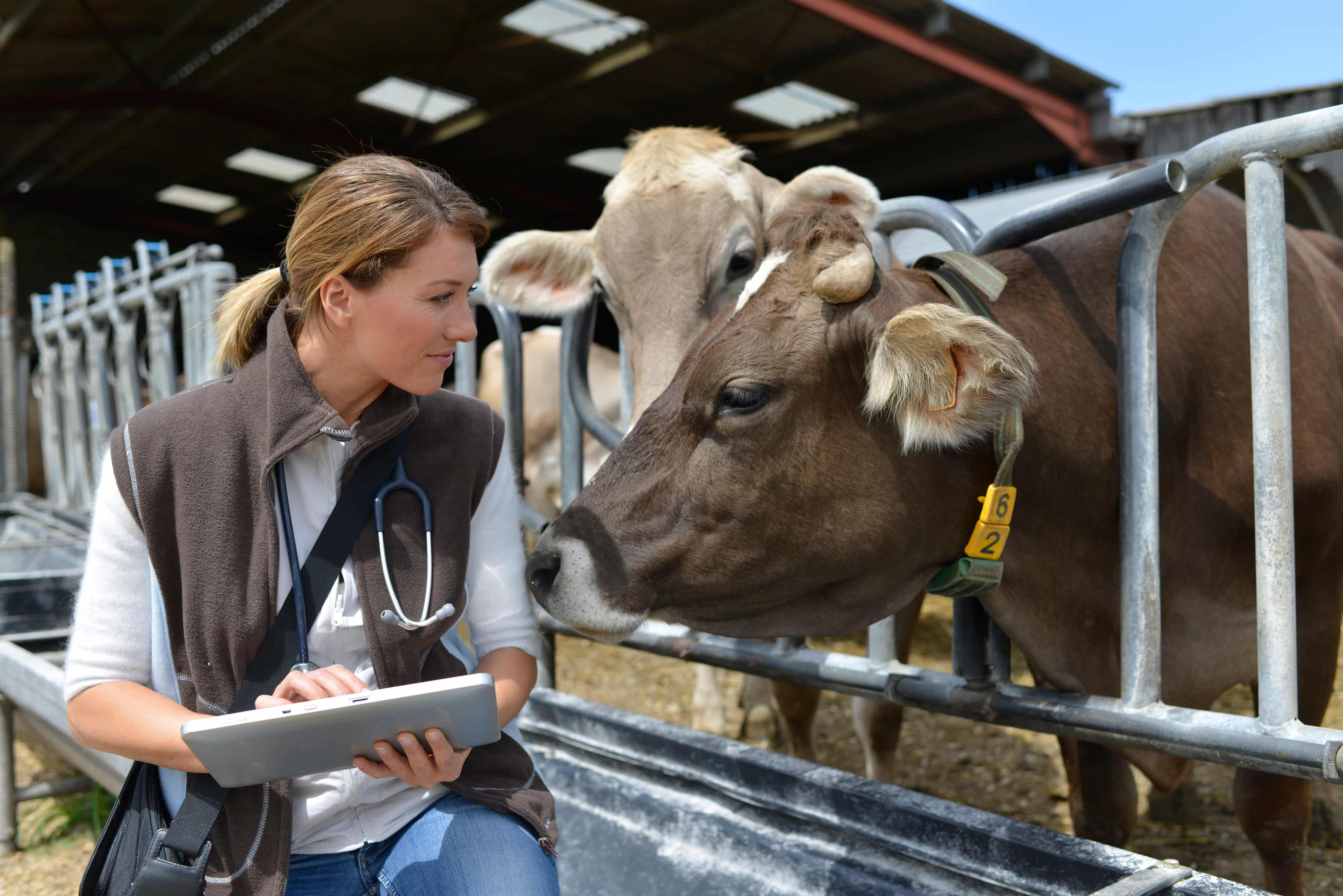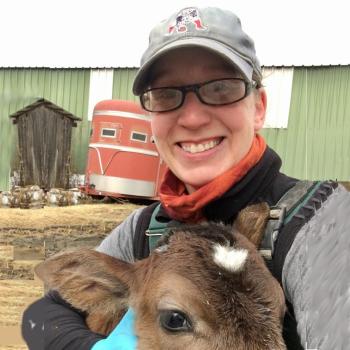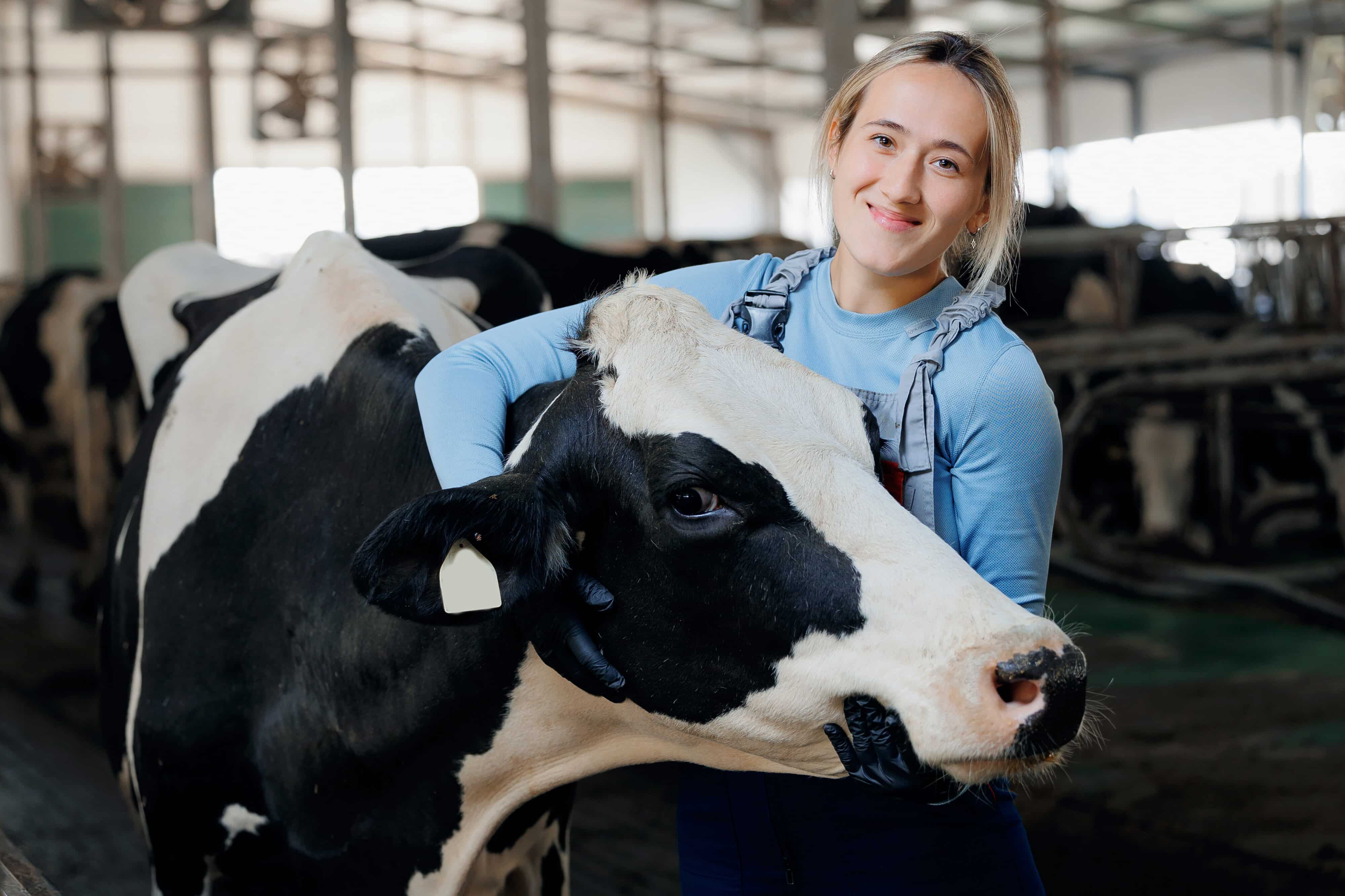Displaced abomasum is one of the most NAVLE®-tested conditions in dairy practice, and for good reason. It is common, clinically relevant, and a perfect case for diagnostic reasoning.
But not all displacements are created equal.
Understanding the key differences between left displaced abomasum (LDA) and right displaced abomasum (RDA) can help you respond appropriately in the field and choose the right answer under pressure.
What Is a Displaced Abomasum?
The abomasum is the cow’s true stomach, normally positioned on the ventral midline of the abdomen, slightly right of center. Displacement happens when gas accumulates, causing the abomasum to “float” out of place.
This usually occurs in the first month postpartum, especially in cows with other issues like:
- Metritis
- Retained placenta
- Ketosis
- Hypocalcemia
Why? All of these reduce feed intake and rumen fill, increasing gas buildup and disrupting motility.
LDA vs. RDA: What’s the Difference?
| Feature | LDA (Left Displaced Abomasum) | RDA (Right Displaced Abomasum) |
|---|---|---|
| Direction | Floats between rumen & body wall on left | Floats over omasum on right |
| Risk of volvulus | Low | High risk |
| Emergency? | No – often stable | Yes – surgical emergency |
| Treatment window | Hours to days | Minutes to hours (especially with volvulus) |
In an RDA, the abomasum has space to twist on its axis, much like gastric dilatation/volvulus (GDV) in dogs, cutting off blood supply and leading to shock or death if untreated.
Clinical Signs: Left vs. Right DA
Shared signs:
- Off feed
- Drop in milk production
- Reduced rumen contractions
- “Ping” on percussion
- Recent calving history (often, but not required)
RDA/Volvulus-specific red flags:
- Tachycardia (HR > 100 bpm)
- Colic-like behavior (restless, kicking at belly)
- Severe dehydration
- “Papple” shape to abdomen (left side = apple, right side = pear)
- Rapid deterioration
The degree of tachycardia is proportional to prognosis: the faster the heart rate, the worse the outlook.
Diagnostic Clues That Help You Tell Them Apart
LDA ping:
- Location: ribs 9-13 on the left, along a line between elbow and tuber coxae
- Accompanied by history of gradual decline, +/- ketosis
RDA ping:
- More caudal and ventral on the right side
- May extend to 9th rib space
- Often accompanied by distended abdomen and altered rectal findings
Volvulus-specific signs:
- Severe colic
- Decreased or absent manure
- Metabolic alkalosis with hypochloremia and hypokalemia
- Distended abomasum on rectal palpation in right cranial abdomen
Treatment and Prognosis: When to Act Fast
LDA can be managed medically first, with an omentopexy or toggle if relapse occurs:
- Sedation + rolling (recurrence is likely!)
- Oral calcium and propylene glycol
- High-quality forage
- Rumen transfaunation
RDA or volvulus, on the other hand, always requires:
- Immediate surgical correction
- Right flank omentopexy or abomasopexy
- Possible fluid and electrolyte support
NAVLE® Tip:
Only LDAs are eligible for roll-and-toggle procedures. Blind tack surgeries are dangerous in RDAs due to risk of torsion or misplacement.
Summary Table: LDA vs. RDA Cheat Sheet
| Feature | LDA | RDA/Volvulus |
|---|---|---|
| Side | Left | Right |
| Ping | Ribs 9-13, dorsal | Ribs 9-13, ventral |
| Rectal palpation | Not palpable | May feel distended abomasum |
| Heart rate | Often normal | Often >100 bpm |
| Emergency? | No | Yes |
| Medical management? | Possible, but recurrence likely | No! |
| Prognosis | Good | Guarded to poor (especially with shock) |
Recognize the Pattern, Respond with Confidence
Whether you are palpating in the field or selecting answers in a timed test, the key to success with displaced abomasum is pattern recognition:
- Fresh cow
- Off feed, down in milk
- Ping → determine side and urgency
- Tachycardia or colic? → think volvulus
- Move quickly, treat confidently
As the old saying goes:
“Never let the sun set on an RDA.”




